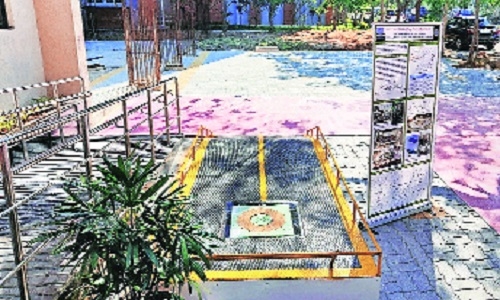Team VNIT develops chargerfor light electric vehicles
| Date :30-Jan-2024 |

Staff Reporter
With the rise in number of electric vehicles, people need to have a charging facility at their homes. To charge the vehicle, everybody has to install plug point where they can keep their vehicles comfortably for charging. Many people, especially those staying in flats, find it difficult to get their vehicle charged. But an invention made by the team of Visvesvaraya National Institute of Technology (VNIT), that has developed wireless charger for electric vehicles, has provided the solution to this problem. This wireless charger is designed and developed by Dr Ritesh Keshri, Associate Professor and his team of PhD students Vaka Ravikiran, Suman Saurav and Sana Azami with significant contributions from other PhD and MTech students of the e-Mobility Lab.
Dr Keshri told ‘The Hitavada’, “This wireless charger can charge a light electric vehicle of 4.8 kWh battery pack within three hours.” Dr Ritesh Keshri has been working in this area for the last eight years to ensure product level demonstration. Nagpur’s transformer making company High Rise Transformer and Bose Research Pvt Limited Bangalore are technology support partners for industry grade development. Ministry of Electronics and Information Technology, Government of India funded the project with a grant of Rs 1 crore. It has been executed together with CDAC. e-Mobility Lab is working rigorously on the different domains of electric vehicles since 2015 and came up with various future technologies.”
Explaining about the project Dr Keshri said, “Wireless charging is a solution with flexibility to charge an electric vehicle where we don’t need to have wired connection between charging point and vehicle.” Wireless charging can be of two types, one stationary charging where vehicle remains stationary/standing and second one charging while in motion where vehicle keeps on moving and get charged. A typical wireless charging system consists of power electronics system to receive energy from grid point (single/three phase), coil system to transfer energy from the grid point to the vehicle through high-frequency inductive coupling and on-board power electronics to charge the on-board batteries. In a wireless charger one coil remains buried in the ground and another coil is fixed at the bottom of the vehicle. When the two coil comes in vicinity charging of the vehicle starts.



